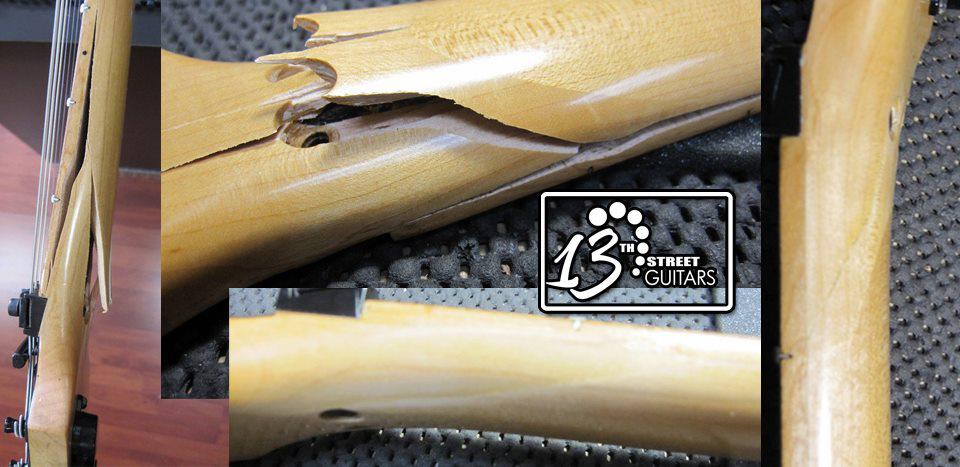While Gibsons of today may not be what they used to be, they're a far cry from the fake copies (AKA Chibson) that are coming out of China. The fakes owe more similarities to an Epiphone guitar, but don't even meet the quality of one.
I get asked all the time: "What do you think? Is it worth a couple hundred bucks." The answer is always "No."
The build quality is horrendous. The hardware is a joke. The fret work and necks are so bad that the best fret level many times cannot correct all the issues with it. Some would need a refret to get them right. The pickups are almost always Epiphone pickups. The rest of the wiring makes Epiphone stuff look like high quality work. A look inside at the cavities gives you a clue as to how poorly they are constructed.
The Grover tuners are completely fake. If you take a string off of them, they rattle like crazy. Epiphone level "Grovers" are much better, and they're still nowhere near the quality of high-end Grovers that would come on a USA Gibson.
Your money is much better spent on a lookalike guitar that was built to decent quality. The only positive point about these is the headstock shape and logo look pretty legit from a distance. Otherwise, no good at all.
People say "Well, what if I buy it and then upgrade everything on it?" Then you'll have something that is decent, but you just spent as much as you would on a good used Gibson that doesn't need any upgrades. We've seen this happen a few times, and the owners are usually not pleased in the end.
Identifying A Fake Gibson:
Gibson has an article on their website that is somewhat outdated. This is still a good place to start. Note that some fakers have moved to a two-screw truss rod cover because they've read the article, as well. Here is a photo of one I saw recently side by side with a real cover. The thing was obviously hand carved, and the logo is not only crooked - Gibson doesn't even write all that on there!
Seems legit!
The truss rod cover is very easy to swap, however. If someone is trying to sell it as real, they will likely upgrade that part.
An obvious giveaway on many of these is the nut and the binding at the nut. If I'm looking at a suspect guitar, I analyze that area.
Photo Credit Gibson.com
The nut on a fake usually looks more like an Epiphone nut. It's thicker than a Gibson. Gibsons are built with a head-cap that lays against the back of the nut. (the left side) Epiphones and the fakes have a thicker nut that lays on top, with nothing against the back of it. UPDATE: I recently had my hands on one of these that had a head-cap more like a real Gibson. Removing the truss rod cover revealed a couple of obvious details, however. The cover itself was hand made, very poorly. Under the cover you find an allen (hex) wrench truss rod in a messy hole. Gibsons should have a rod that protrudes outward so a nut driver can be slipped over it. If it's just a hole in there, that's wrong.
If you're buying a Gibson from someone online or on Craigslist, you need to look carefully at this part. They may have upgraded everything else on the guitar, but this part can't be hidden.
The bridge and tailpiece usually have sharp edges under the chrome plating. If you run your finger over the edge, it should feel smooth. If it has a harsh edge, it's not a Gibson part. The bridge usually has 6mm posts you would see on an import. Gibson doesn't use these. They use the skinny posts that don't have a slot in them for adjustment.
If you're buying an expensive guitar, the seller should take no issue with you opening the control cavity to look inside. You should see braided wires, large pots (that usually say Gibson or possibly CTS on older models). The routes should be clean and not left with burrs and sawdust inside. If you see a rat's nest of red and blue and green wires, then it's not real.
Finally, my advice to anyone buying their first Gibson: Go to an authorized dealer of Gibson guitars. Play a couple of them. Get a feel for what they're supposed to be. Then you'll have a little ammunition to keep you from making a terrible mistake. If buying from a private seller, meet at their home. If they want to meet at a 7/11 at night, don't do it. Have them meet you at my shop or bring someone else who knows for sure if it's real or not.
We've seen a handful of people who had no idea their Gibson was fake. Tracking down the seller later will be impossible. If the deal sounds too good to be true, it just might be.






